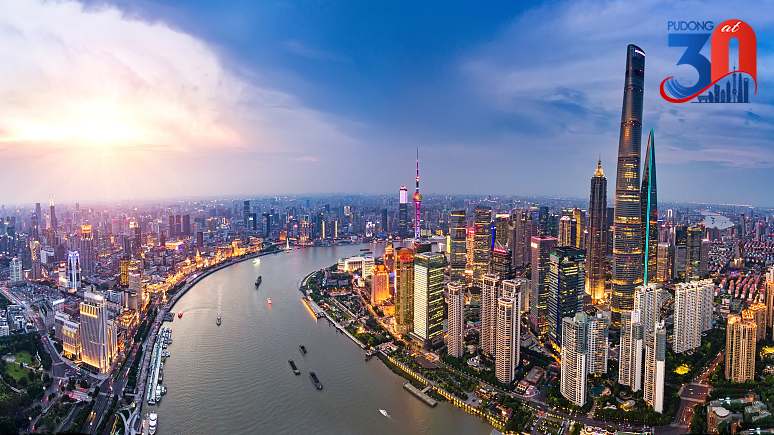
Located at the junction of the Yangtze River and the East China Sea, Shanghai plays an important role in connecting the Yangtze River Economic Belt with overseas markets, and promotes the development of the economic belt that as an aggregates makes up 40 percent of the country's population and economic output.
The Huangpu River cuts Shanghai into two parts: the Puxi area on the western side is rich in history, and on the other side, Pudong is the part of China that opened up to the world at an early stage back in 1990, and is currently home to the most China headquarters and R&D centers among foreign companies.
Back in the 1990s, when Deng Xiaoping was visiting Shanghai and explained why the government decided to open up Pudong district in Shanghai, he explained that Shanghai faces the Pacific Ocean, the goal of opening up Shanghai is to connect the entire Yangtze River area to the rest of the world through Shanghai.
At the 30th anniversary of the founding of Pudong economic development area, Pudong is slated to become one of the core cities in the Yangtze River Economic Belt, and lead the region to a new level of development.
China launched the Outline of the Yangtze River Economic Belt Development Plan in March 2016, which determined a "one axis, two wings, three poles and multiple points" development pattern for the region, which included innovation-driven transformation of industries, promotion of new urbanization, opening-up in an all-round way, and system and mechanism innovation of regional coordinated development.
The Yangtze River Economic Belt covers 11 provincial-level regions, including Shanghai, Jiangsu, Zhejiang, Anhui, Jiangxi, Hubei, Hunan, Chongqing, Sichuan, Yunnan and Guizhou. It occupies 2.05 million square kilometers, taking up 21 percent of the country’s total, and the population and economic aggregates both occupy over 40 percent of the country’s total.

Five of China's biggest city clusters. /CGTN
Five of China's biggest city clusters. /CGTN
The Yangtze River Economic Belt covers three out of the five biggest city clusters in China, including the Yangtze River Delta, the middle reaches of the Yangtze and the Chengdu-Chongqing city cluster. Together with Beijing-Tianjin-Hebei Region up on the north surrounding China's capital, and the Pearl River Delta down the south surrounding China's tech hub Shenzhen, the five big city clusters in China forms of structure of the country's economy.
To lead the development of the Yangtze River Economic Belt, Pudong and Shanghai bear great responsibility, said Jiao Yongli, a professor from China Executive Leadership Academy Pudong.
To achieve the goal, Shanghai needs continue to strengthen its core functions as international economic, finance, trade, shipping and technology innovation centers, and improve the city's ability of allocating resources globally, said Jiao.
Shanghai needs to develop certain functions and platforms in finance, shipping, tech, etc. that are indispensable to the rest of the world, so that the city could better promote the entire region to develop, Jiao specified.
Shanghai should also summarize the city's experiences in transformation for the city has had a head start, and share the exemplary paths to the economic belt, said Jiao.
Shanghai has built free trade zone, and institutions and systems that match global investment and trading regulations, and made breakthroughs in financial opening up, facilitating the convenience of trading, and explored new paths in building a new open economic mechanism, according to Jiao, those are all valuable experiences that the other cities along the Yangtze River Economic Belt, said Jiao.

